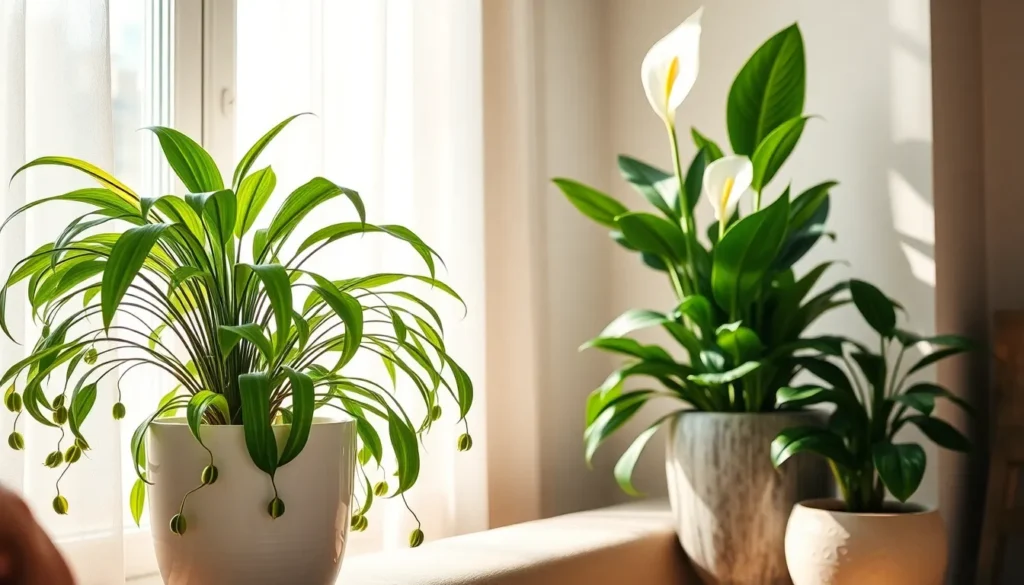Welcome to the flourishing world of indoor gardening, where the benefits extend far beyond mere aesthetics, and into the very air you breathe! Whether you’re just dipping your toes into the lush world of houseplants or you’ve got a green thumb that’s already well-worn, this guide to the best indoor plants for air quality is your ticket to a healthier, happier home environment. Imagine the joy of nurturing plants that not only beautify your space but also purify the air, transforming your home into a serene, natural oasis.
In this guide, we’ve handpicked a selection of indoor plants that are champions at improving air quality, offering practical benefits that go hand-in-hand with the joy of successful gardening. As you explore these plant options, you’ll gain confidence in your ability to create a thriving indoor garden that rewards you with cleaner air and a sense of accomplishment. So, gather your gardening gloves and watering can; the path to a fresher, more vibrant home begins here, and it promises to be a delightful journey for every gardener.
Peace Lily (Spathiphyllum wallisii)
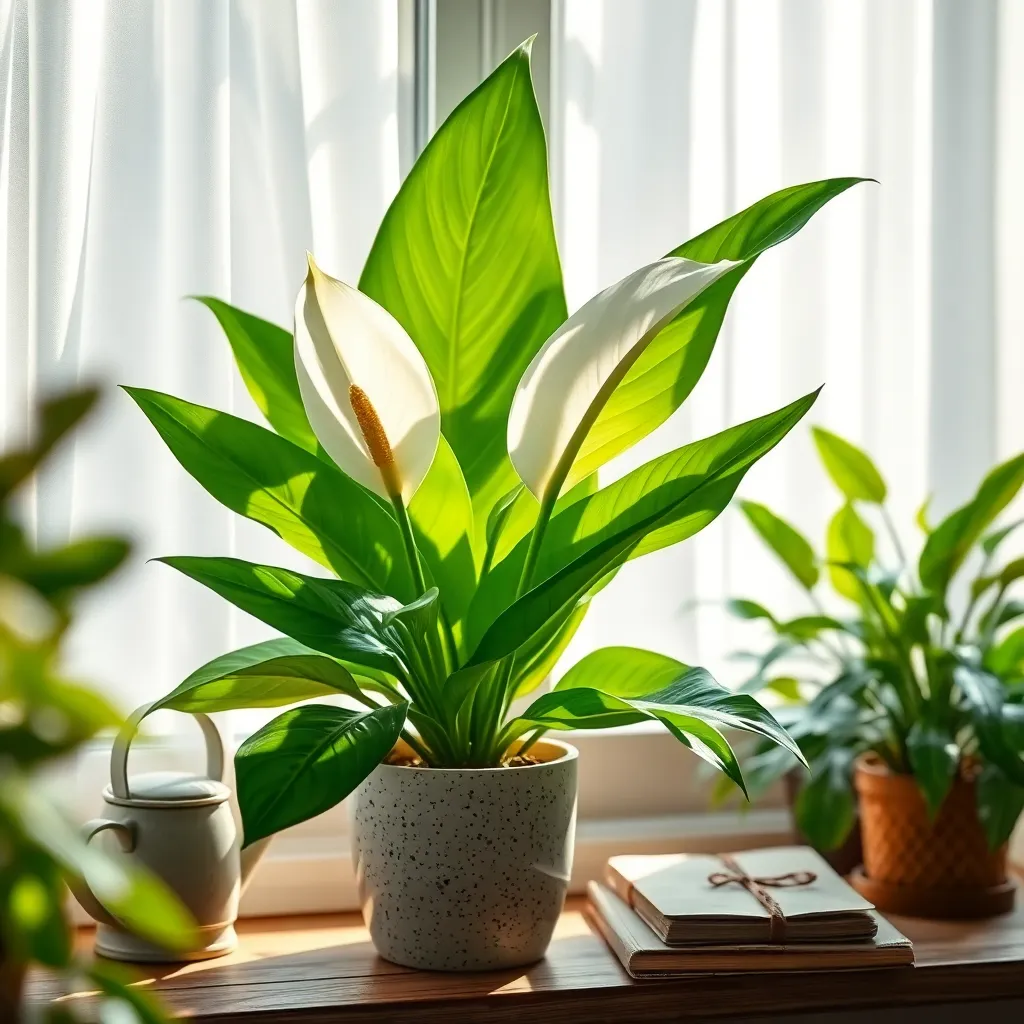
The Peace Lily, or Spathiphyllum wallisii, is a popular choice for improving indoor air quality due to its ability to remove toxins like ammonia and formaldehyde. This plant thrives in low to medium light conditions, making it perfect for rooms with limited sunlight.
To keep your Peace Lily healthy, water it when the top inch of soil feels dry, but avoid overwatering as this can lead to root rot. Using a well-draining potting mix, such as a peat-based soil, will help ensure that excess water does not accumulate.
Fertilizing your Peace Lily every six to eight weeks with a balanced houseplant fertilizer can promote lush growth. However, during the winter months, it’s advisable to reduce feeding as the plant’s growth naturally slows down.
For those looking to encourage blooming, positioning the plant in a slightly brighter location can help, as long as it’s not exposed to direct sunlight, which can scorch its leaves. Regularly wiping the leaves with a damp cloth will not only keep them clean but also help the plant efficiently filter air.
Spider Plant (Chlorophytum comosum)
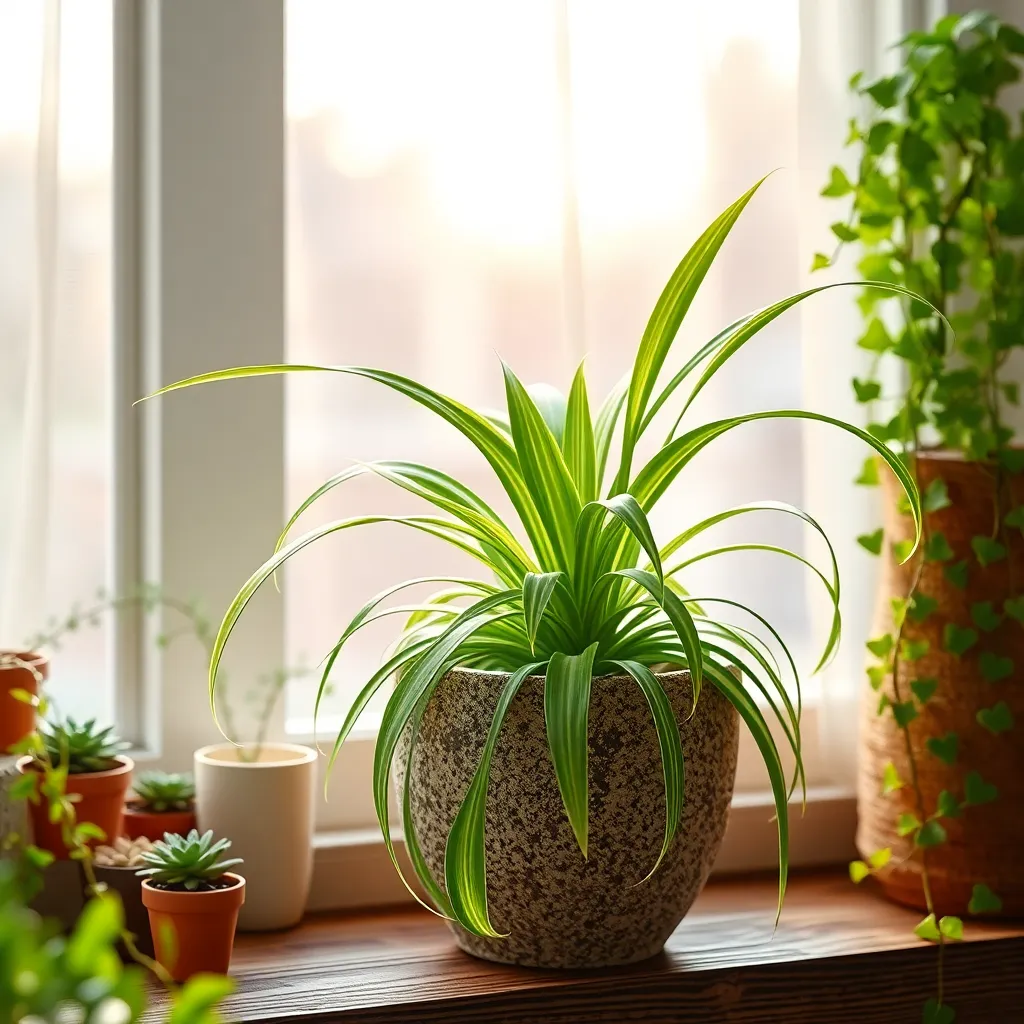
Spider plants (Chlorophytum comosum) are excellent choices for improving indoor air quality, as they are known for their ability to filter out common pollutants like formaldehyde and xylene. These hardy plants are perfect for beginners, requiring minimal care while offering a lush, green appearance.
When it comes to light conditions, spider plants thrive in bright, indirect light but can tolerate lower light levels. If you notice the leaves losing their vibrant color, consider moving the plant to a brighter spot as a simple adjustment.
Watering spider plants is straightforward, as they prefer the soil to dry out slightly between waterings. A good rule of thumb is to water them every 1-2 weeks, depending on the humidity and temperature of your home.
For soil, use a well-draining potting mix, such as a standard houseplant blend or a mix designed for cacti and succulents. Repotting every two years is recommended to refresh the soil and give the roots more space to grow, ensuring continued health and vigor.
Aloe Vera (Aloe barbadensis miller)
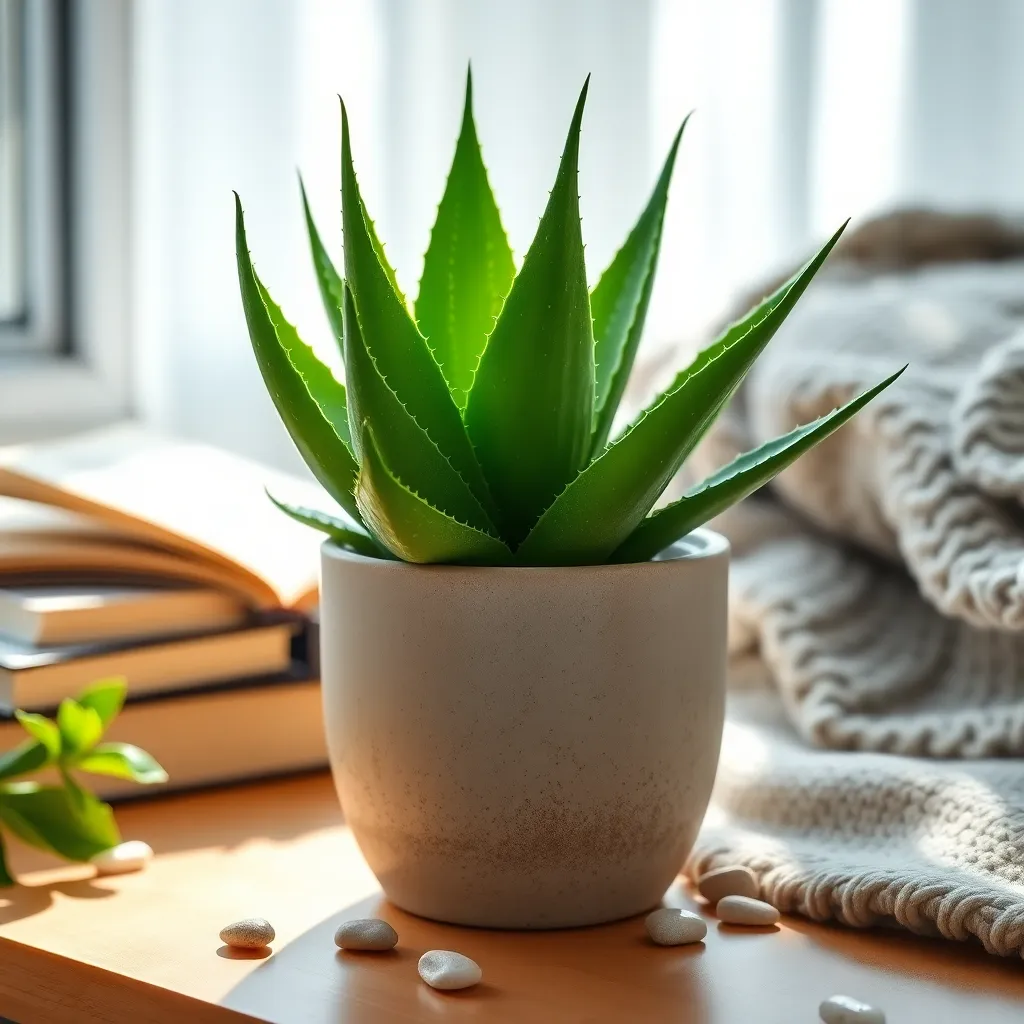
Aloe Vera (Aloe barbadensis miller) is a resilient plant known for its air-purifying qualities and medicinal uses. It thrives in indoor environments, making it a popular choice for improving air quality at home.
Position your Aloe Vera plant in a bright, sunny spot, such as near a south or west-facing window. This succulent prefers indirect sunlight, which helps keep its leaves healthy and vibrant.
When it comes to watering, Aloe Vera is drought-tolerant and requires a light touch. Water deeply but infrequently—about once every two to three weeks—allowing the soil to dry out completely between waterings.
Use a well-draining cactus or succulent potting mix to prevent root rot, a common issue with overwatering. A pot with drainage holes is essential to ensure excess water can escape easily.
Advanced gardeners might consider giving their Aloe Vera a boost with a balanced, water-soluble fertilizer diluted to half strength, applied once in the spring and once in the summer. Regularly check for pests like mealybugs, which can be treated with a gentle insecticidal soap or neem oil if necessary.
English Ivy (Hedera helix)
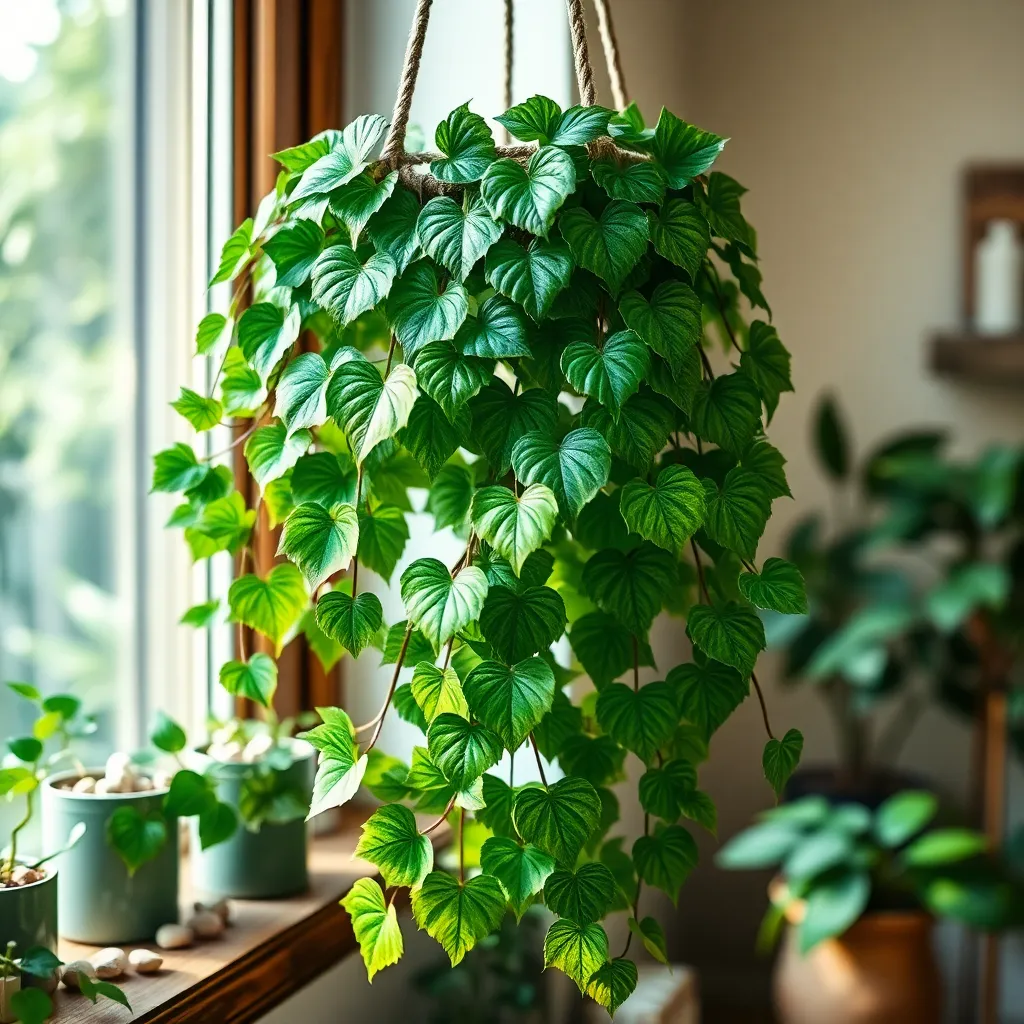
English Ivy (Hedera helix) is a fantastic choice for improving indoor air quality, as it is known for its ability to remove toxins like formaldehyde. To successfully grow this plant indoors, provide it with bright, indirect light and ensure the soil remains slightly moist.
For optimal growth, use a well-draining potting mix and a container with drainage holes. Water the ivy when the top inch of soil feels dry to the touch, and be careful not to let the roots sit in water, which can cause root rot.
English Ivy can adapt to various humidity levels, but it thrives in slightly humid environments. To maintain humidity, consider misting the leaves occasionally or placing a tray of water near the plant.
Advanced gardeners can propagate English Ivy easily through stem cuttings. Simply cut a 4-6 inch stem below a leaf node, remove the lower leaves, and place the cutting in water or a moist potting mix to root.
Rubber Plant (Ficus elastica)
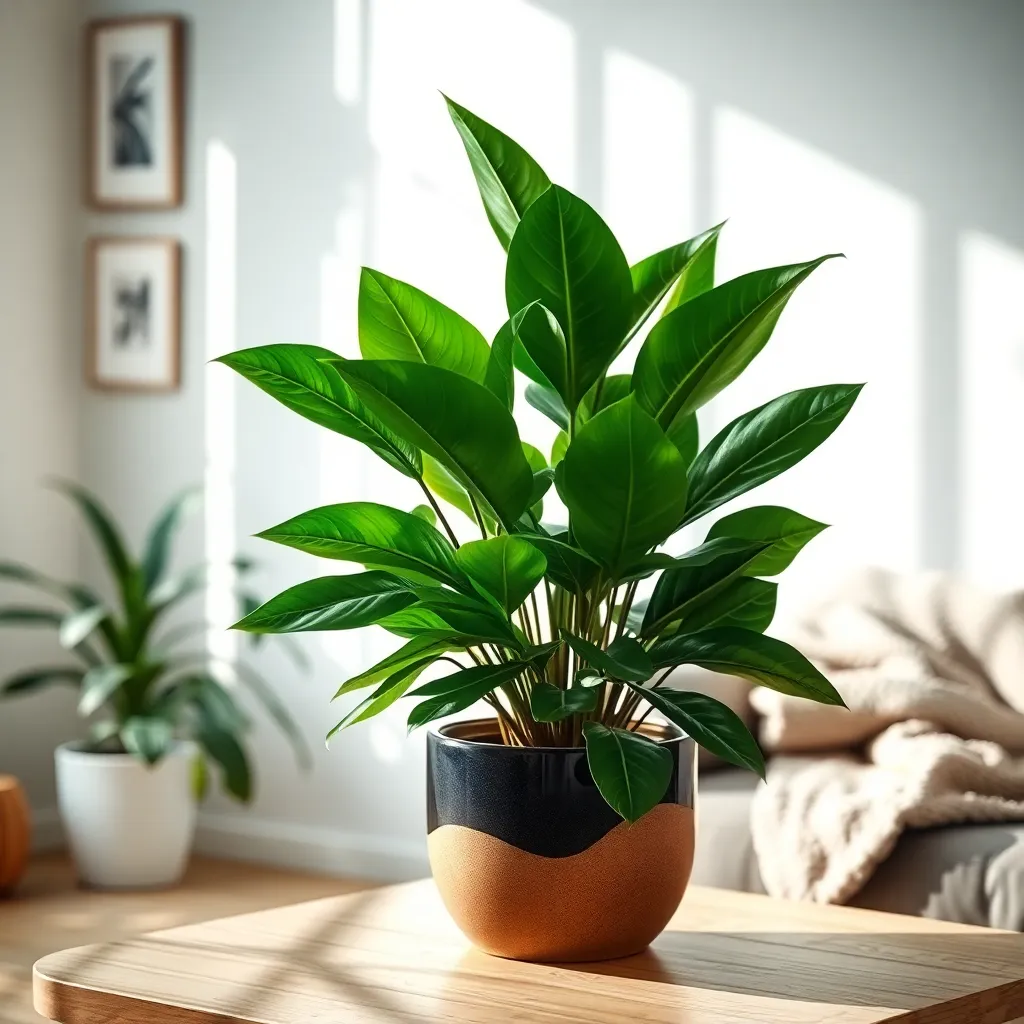
The Rubber Plant (Ficus elastica) is known for its ability to improve indoor air quality by removing toxins like formaldehyde. It is a perfect choice for beginners due to its low-maintenance nature, thriving in a variety of indoor conditions.
To ensure optimal growth, place your Rubber Plant in a spot with bright, indirect light. Direct sunlight can scorch its leaves, while too little light can slow its growth, so balance is key.
When it comes to watering, allow the top inch of soil to dry out between waterings to prevent over-watering and root rot. Using a well-draining potting mix, such as one designed for succulents, can further aid in preventing waterlogged roots.
Advanced gardeners may consider occasional leaf cleaning to keep foliage dust-free, enhancing the plant’s ability to photosynthesize efficiently. Additionally, fertilizing every four to six weeks during the growing season with a balanced liquid fertilizer can promote lush growth.
Conclusion: Growing Success with These Plants
In nurturing healthy relationships, the environment we cultivate at home plays a pivotal role. This article explored five key concepts: the importance of shared spaces, the impact of environment on mood and connection, the role of nature in reducing stress, how indoor plants can enhance air quality, and the symbolism of growth in relationships. By integrating indoor plants into your home, you create a nurturing atmosphere that fosters both physical well-being and emotional closeness.
As an immediate next step, consider choosing a plant together with your partner or loved ones, such as a peace lily or snake plant, to symbolize your shared journey of growth and care. This small act of collaboration can serve as a constant reminder of your mutual commitment to a healthy environment and relationship.
To ensure these insights remain at your fingertips, bookmark this article as a valuable resource for maintaining both air quality and relationship quality. Looking ahead, remember that a thriving relationship, much like a flourishing plant, requires ongoing attention and care. By taking proactive steps today, you’re setting the stage for a future filled with growth, harmony, and shared joy. Your journey towards a healthier, more connected relationship starts now—embrace it with open arms.

